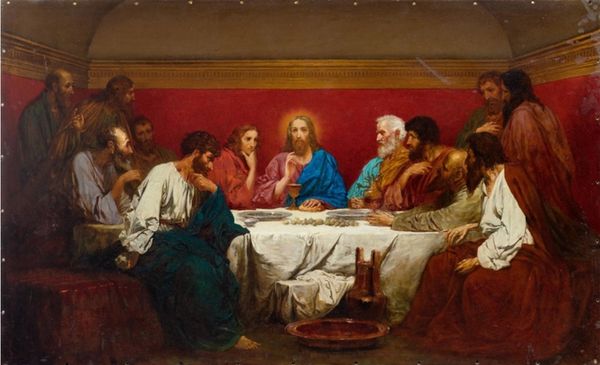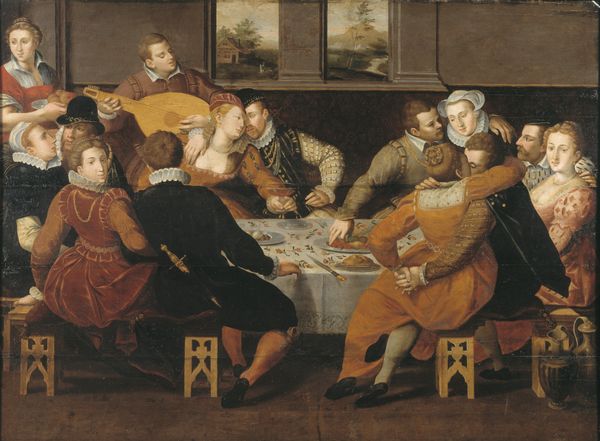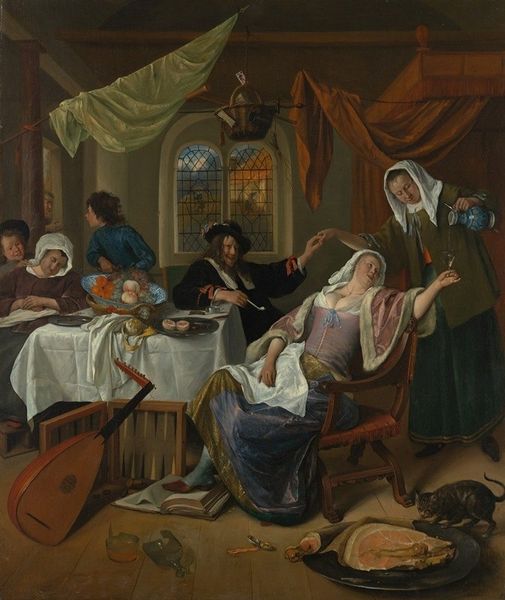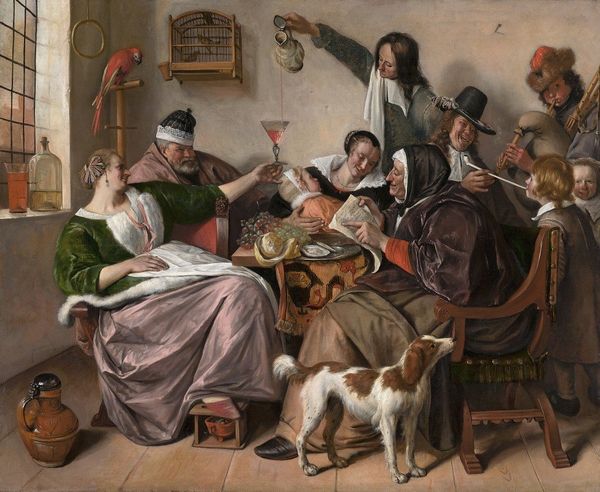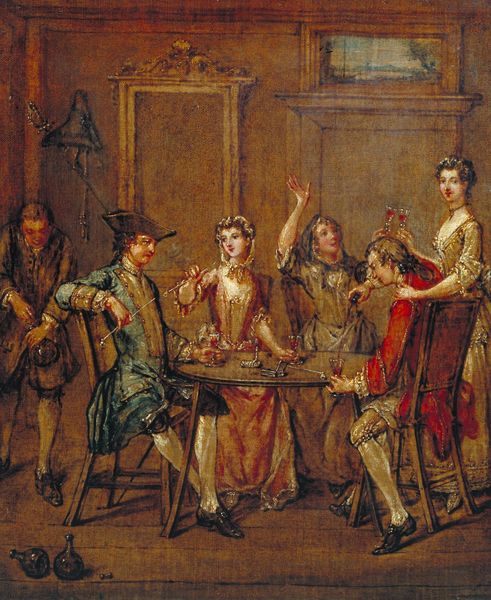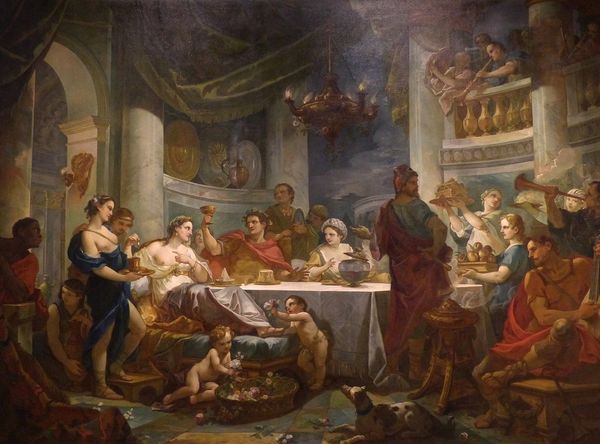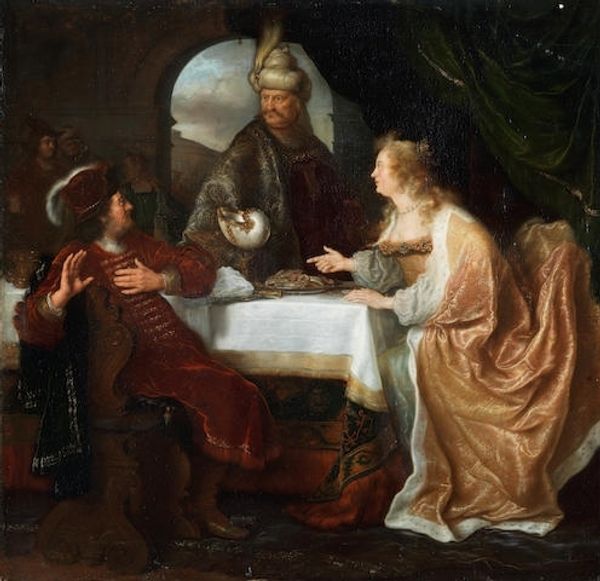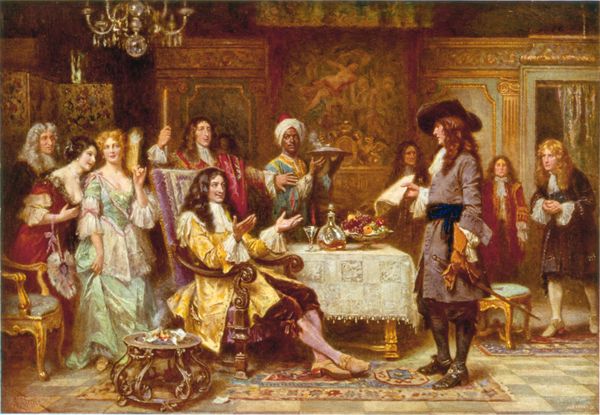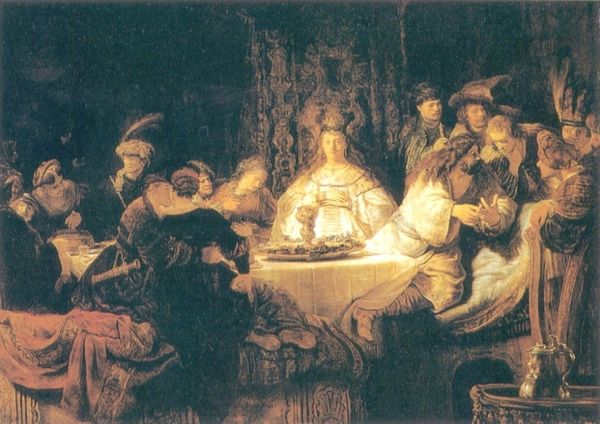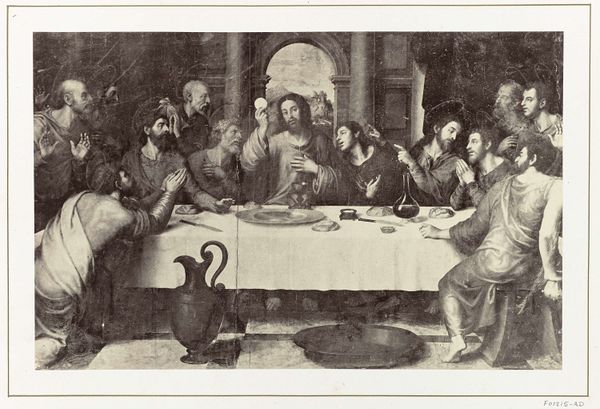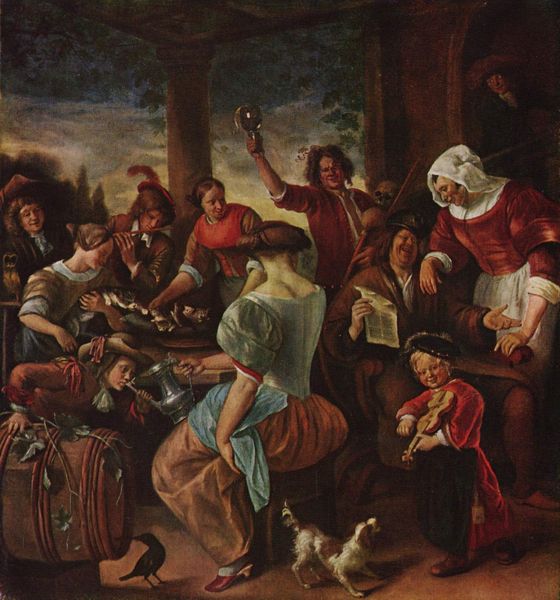
painting, oil-paint
#
portrait
#
figurative
#
painting
#
oil-paint
#
figuration
#
oil painting
#
group-portraits
#
romanticism
#
history-painting
#
pre-raphaelites
#
portrait art
#
fine art portrait
Copyright: Public Domain: Artvee
What is happening in this painting? Who are the figures? And why was it controversial? 🤔 ‘Isabella’ was completed by Sir John Everett Millais (1829-1896) in 1849, the year after the establishment of the Pre-Raphaelite Brotherhood in London. The Pre-Raphaelites were a group of seven painters and authors who rejected the formalism of academic art and instead explored medieval influences. This rejection of tradition proved divisive – in 1850, Charles Dickens attacked the Pre-Raphaelites as ‘mean, odious, repulsive, and revolting’! 😱 Alongside Millais, the initial group included the painters Dante Gabriel Rossetti (1828-1882) and William Holman Hunt (1827-1910). ‘Isabella’ is an early example of the stylistic choices associated with the Pre-Raphaelite movement. 🖼️ The figure of Isabella, the sister of merchants, sits in the foreground in a grey dress. Next to her, in pink, is the working-class Lorenzo. The interaction between Lorenzo and Isabella is watched closely by Isabella’s wealthy brothers, who both disapprove of their relationship. 👩❤️👨 This painting depicts the moment that Isabella’s brothers realise she is in love with Lorenzo, their employee. In the original 14th-century story, Isabella’s brothers plan to murder Lorenzo to ensure she marries a nobleman. It’s full of interesting symbolism. Take a look at the plate which Lorenzo offers to Isabella. The blood orange symbolises decapitation! A sense of doom is reinforced by the agitated greyhound at the foreground of the scene. The leg of Isabella’s brother is raised towards the greyhound, suggesting he is just about to kick the dog. His facial expression is violent and angry, with teeth slightly bared. He wears the colour of fresh blood. 🗡️ Unlike the restrained and controlled compositions of Victorian academic art, Millais’ scene is crowded and less structured. It is often speculated that the figures around the table are based on the artist’s friends. 🧑🎨 What strikes you most about this painting? Is it the vibrant colour? The chaotic arrangement of figures? 👇💭 Editor: Lucy Jude Grantham
Comments
No comments
Be the first to comment and join the conversation on the ultimate creative platform.
